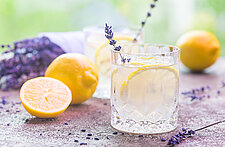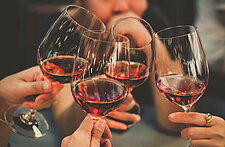By Junior Merino, The Liquid Chef
Rum is an alcoholic spirit that is produced from sugar cane derivatives such as molasses or produced directly from sugar cane juice through the fermentation and distillation processes. The majority of rum is produced in the Caribbean and Latin American countries, although rum or variations of rum are made in other parts of the world including Australia, South Africa, India and The Philippines, among others.
Rum has regional variations. In the Caribbean, for example, Spanish speaking nations produce “anjeo” rums that have a smooth taste. This region includes Puerto Rico, Dominican Republic, Cuba, Panama and Colombia to name a few. Rums from the US Virgin Islands are also produced in this manner and because of the large influence of Puerto Rican rum the majority of rum consumed in the United States is of the Spanish speaking countries’ variety.
CLICK HERE to view Rum Renaissance
The English speaking islands and countries in the Caribbean normally produce darker rums that have a fuller taste and contain more of the molasses flavor. These include Jamaica, Trinidad & Tobago, Barbados and St. Kitts. The French speaking islands offer “rhum agricole” or agricultural rum. These are made solely from sugar cane juice and have a greater degree of the sugar cane flavor. Produced in Martinique, Guadeloupe and Haiti, rhum agricole is generally more expensive and favorably compares with the more luxurious cognacs and armagnacs available in the world. Portugese speaking Brazil produces cachaca. The main difference is that unlike rum, which uses molasses, cachaca is made from sugar cane juice.
There are other variations worthy of mention. Panama produces seco. While similar to rum seco is also similar to vodka due to it being triple-distilled. Aguardiente is distilled from molasses and frequently infused with anise and additional sugar cane juice. The varieties of aguardiente are many depending on where in northern South America or Central America it is produced.
CLICK HERE to view Monthly Mixology: Gin
Indonesia is known for “arrak”. This spirit is similar to rum as it is distilled from sugar cane. However it uses red rice and local yeast in the fermentation process to give it a unique flavor. In West Africa, mainly Liberia, cane juice or “CJ” is manufactured. Distilled from sugar cane, “CJ” is cheap, strong liquor containing a high proof. South Africa produces refined cane liquor known as “Cane”. In Europe, variations of rum are also available. The Czech Republic offers “tuzemak”, which is made from sugar beets. Germany produces Rum-Verschnitt or blended rum. It is usually made from Jamaican dark rum to which water, rectified spirit and caramel color is added. Its taste is similar to genuine dark rum but is low in rum content due to German law allowing only a very low 5%. Austria has something similar that is known as “Indlanderrum” or domestic rum. This is always spiced whereas the German variety is never spiced.

Cachaca, pronounced “ka-sha-sa”, is the most popular distilled alcoholic beverage in Brazil. Unlike rum, which is usually made from molasses, cachaca, just as its French West Indian counterpart, Rhum Agricole, is made from sugar cane juice. Cachaca is produced before the crystallization of sugar occurs, whereas, molasses is produced after crystallization. But just as with rum, cachaca also comes in both the unaged (clear) and aged (gold or amber) varieties. Cachaca is also the main ingredient in the Caipirinha, Brazil’s national drink, which is becoming a favorite around the world.
Rhum Agricole is a form of rum that is distilled from sugar cane juice rather than from molasses. It is produced on the Caribbean islands of Martinique, Guadeloupe and Marie Galante, as well as Reunion Island and Maritius in the southwest Indian Ocean. Some consider rums made in Haiti from sugar cane juice also to be Rhum Agricole. Of all of the Rhum Agricole producing areas, Martinique is the only entity that has an “Appellation d’Origine Controlee” (protected designation of origin) that was issued by the French government and is also recognized by the European Union, of which France is a member. Martinique and other French West Indian islands also produce “rhum industriel”, which is made from molasses.
There is no individual standard for what defines rum as that is left to the countries where the spirit is produced. Some classifications include proof, aging and naming. Despite this, there are frequently used terms that are used to classify rum. These include light, gold, spiced, dark, flavored, overproof and premium.
Click HERE to view Monthly Mixology: Blooming Botanicals
Light rum contains little flavor and because of its mildness and it is used in mixed drinks rather than being drunk neat, even though that is slowly changing with the addition of ultra premium rums. It is usually filtered to remove color. Light rum is also known as silver rum or white rum. Gold rum is medium-bodied and usually aged. It obtains its color from the barrels in which it is aged and contains more flavor than its light counterpart. It can be considered mid-range between the light and dark varieties. Dark rum is aged longer and usually in heavily charred barrels giving it a much stronger flavor than the light and gold rums.

What makes rum so popular and has played a role in it’s re-emergence in the cocktail scene, is its versatility. It adds substance and color to drinks and is often used in cooking. Flavored rums are infused with fruit including orange, coconut, banana and lime. These are used to flavor drinks or can be consumed neat or on the rocks. Spiced rum is darker in color, contain spices, including rosemary, cinnamon or pepper and at times, caramel is added.
When creating cocktails utilizing rum as the base, I tend to try to see the subtle notes that can be found within its base. Herbal cachacas or rhum agricole mix well with fruit, herbs and vegetables such as cucumber and jalapeno. Rums with coconut notes can be as versatile from adding fruit and chocolate to peppers and spices. Light rums make simple long drinks, such as the “Cuba Libre” or rum & coke, and aged cocktails can be made with more complex flavors like grilled fruits and more bold flavors like blood orange, roasted grapefruit, vanilla or cinnamon. Just as rum is made all over the world, the ingredients that can be added to creating rum drinks is as diversified as each country that produces it.





